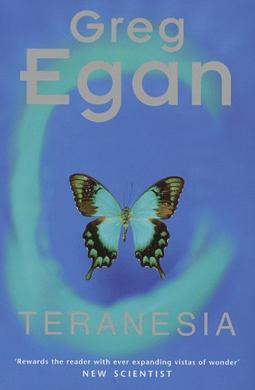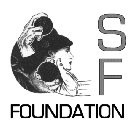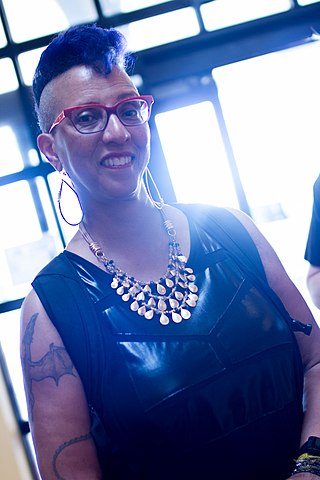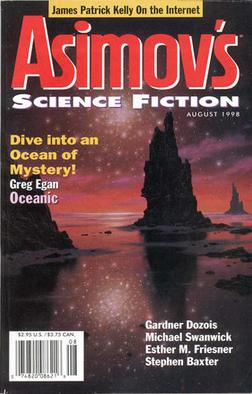Related Research Articles
Greg Egan is an Australian science fiction writer and mathematician, best known for his works of hard science fiction. Egan has won multiple awards including the John W. Campbell Memorial Award, the Hugo Award, and the Locus Award.

Horror is a genre of fiction that is intended to disturb, frighten or scare. Horror is often divided into the sub-genres of psychological horror and supernatural horror, which are in the realm of speculative fiction. Literary historian J. A. Cuddon, in 1984, defined the horror story as "a piece of fiction in prose of variable length... which shocks, or even frightens the reader, or perhaps induces a feeling of repulsion or loathing". Horror intends to create an eerie and frightening atmosphere for the reader. Often the central menace of a work of horror fiction can be interpreted as a metaphor for larger fears of a society.

John Shirley is an American writer, primarily of horror, fantasy, science fiction, dark street fiction, westerns, and songwriting. He has also written one historical novel, a western about Wyatt Earp, Wyatt in Wichita, and one non-fiction book, Gurdjieff: An Introduction to His Life and Ideas. Shirley has written novels, short stories, TV scripts and screenplays—including The Crow—and has published over 84 books including 10 short-story collections. As a musician, Shirley has fronted his own bands and written lyrics for Blue Öyster Cult and others. His newest novels are Stormland and Axle Bust Creek.
Damien Francis Broderick is an Australian science fiction and popular science writer and editor of some 74 books. His science fiction novel The Dreaming Dragons (1980) introduced the trope of the generation time machine, his The Judas Mandala (1982) contains the first appearance of the term "virtual reality" in science fiction, and his 1997 popular science book The Spike was the first to investigate the technological singularity in detail.

Teranesia is a 1999 science fiction novel by Greg Egan. The novel follows protagonist Prabir Suresh, who lives on an island in the South Moluccas with his biologist parents, who are investigating the unique evolutionary traits of butterflies on the island. As civil war erupts in Indonesia, Prabir and his baby sister Madhusree must escape the islands. When they grow up, Madhusree becomes a biology student, motivated to carry on her parents' legacy in uncovering the evolutionary phenomenon. Prabir reluctantly follows her, as he must navigate and confront the truth that shaped his past.

Michael Shea was an American fantasy, horror, and science fiction author. His novel Nifft the Lean won the World Fantasy Award, as did his novella Growlimb.

Foundation: The International Review of Science Fiction is a critical peer-reviewed literary journal established in 1972 that publishes articles and reviews about science fiction. It is published triannually by the Science Fiction Foundation. The Encyclopedia of Science Fiction has called it "perhaps the liveliest and indeed the most critical of the big three critical journals". A long-running feature was the series of interviews and autobiographical pieces with leading writers, entitled "The Profession of Science Fiction", a selection of which was edited and published by Macmillan Publishers in 1992. Several issues have been themed, including #93, also published as part of the Foundation Studies in Science Fiction. The hundredth edition was unusual in that it was an all-fiction issue, including stories by such writers as Vandana Singh, Tricia Sullivan, Karen Traviss, Jon Courtenay Grimwood, John Kessel, Nalo Hopkinson, Greg Egan, and Una McCormack. Back issues of the journal are archived at the University of Liverpool's SF Hub whilst more recent issues can be found electronically via the database providers ProQuest.

Terence William (Terry) Dowling, is an Australian writer and journalist. He writes primarily speculative fiction though he considers himself an "imagier" – one who imagines, a term which liberates his writing from the constraints of specific genres. He has been called "among the best-loved local writers and most-awarded in and out of Australia, a writer who stubbornly hews his own path ."

Robert Maxwell Hood is an Australian writer and editor recognised as one of Australia's leading horror writers, although his work frequently crosses genre boundaries into science fiction, fantasy and crime.

Terror Australis: The Best of Australian Horror was Australia's first original mass-market horror anthology for adults. It was edited by Leigh Blackmore..

Rick Kennett is an Australian writer of science fiction, horror and ghost stories. He is the most prolific and widely published genre author in Australia after Paul Collins, Terry Dowling and Greg Egan, with stories in a wide variety of magazines and anthologies in Australia, the US and the UK.
"Wang's Carpets" is a science-fiction short story by Australian writer Greg Egan, first published in New Legends edited by Greg Bear and Martin H. Greenberg on 5 April 1995.
Australia, unlike Europe, does not have a long history in the genre of science fiction. Nevil Shute's On the Beach, published in 1957, and filmed in 1959, was perhaps the first notable international success. Though not born in Australia, Shute spent his latter years there, and the book was set in Australia. It might have been worse had the imports of American pulp magazines not been restricted during World War II, forcing local writers into the field. Various compilation magazines began appearing in the 1960s and the field has continued to expand into some significance. Today Australia has a thriving SF/Fantasy genre with names recognised around the world. In 2013 a trilogy by Sydney-born Ben Peek was sold at auction to a UK publisher for a six-figure deal.

Linda D. Addison is an American poet and writer of horror, fantasy, and science fiction. Addison is the first African-American winner of the Bram Stoker Award, which she won five times. The first two awards were for her poetry collections Consumed, Reduced to Beautiful Grey Ashes (2001) and Being Full of Light, Insubstantial (2007). Her poetry and fiction collection How To Recognize A Demon Has Become Your Friend won the 2011 Bram Stoker Award for Superior Achievement in a Poetry Collection. She received a fourth HWA Bram Stoker for the collection The Four Elements, written with Marge Simon, Rain Graves, and Charlee Jacob. Her fifth HWA Bram Stoker was for the collection The Place of Broken Things, written with Alessandro Manzetti. Addison is a founding member of the CITH writing group.

"Oceanic" is a science fiction novella by Australian writer Greg Egan, published in 1998. It won the 1999 Hugo Award for Best Novella.

HP Newquist is an American author whose books cover topics, from medicine and music to technology and terror. He is also a museum curator and musician, and has worked as a columnist, publisher, industry analyst, and video director.
The Ditmar Award has been awarded annually since 1969 at the Australian National Science Fiction Convention to recognise achievement in Australian science fiction and science fiction fandom. The award is similar to the Hugo Award but on a national rather than international scale.

Zendegi is a science fiction novel by Australian author Greg Egan, first published in the United Kingdom by Gollancz in June 2010. It is set in Iran in the near future and deals with mapping the human brain, virtual reality and the democratization of Iran. The title of the book means "life" in Persian; the name of the virtual reality system featured in the story is Zendegi-ye Behtar, Persian for "better life".
"Singing My Sister Down" is a 2004 fantasy short story by Australian writer Margo Lanagan.
Crystal Nights and Other Stories is a collection of nine science-fiction short stories by Australian writer Greg Egan, published on 30 September 2009 by Subterranean Press. Two of the stories were nominated for the Hugo Award.
References
- ↑ ""Neighbourhood Watch" by Greg Egan". ISFDB. Retrieved 1 June 2024.
- ↑ Fantasy and Horror Annuals, reviewed by Stefan Dziemianowicz, in the Science Fiction Research Association Newsletter; page 27; number 163 (December 1988); archived online at the University of South Florida; retrieved May 4, 2016